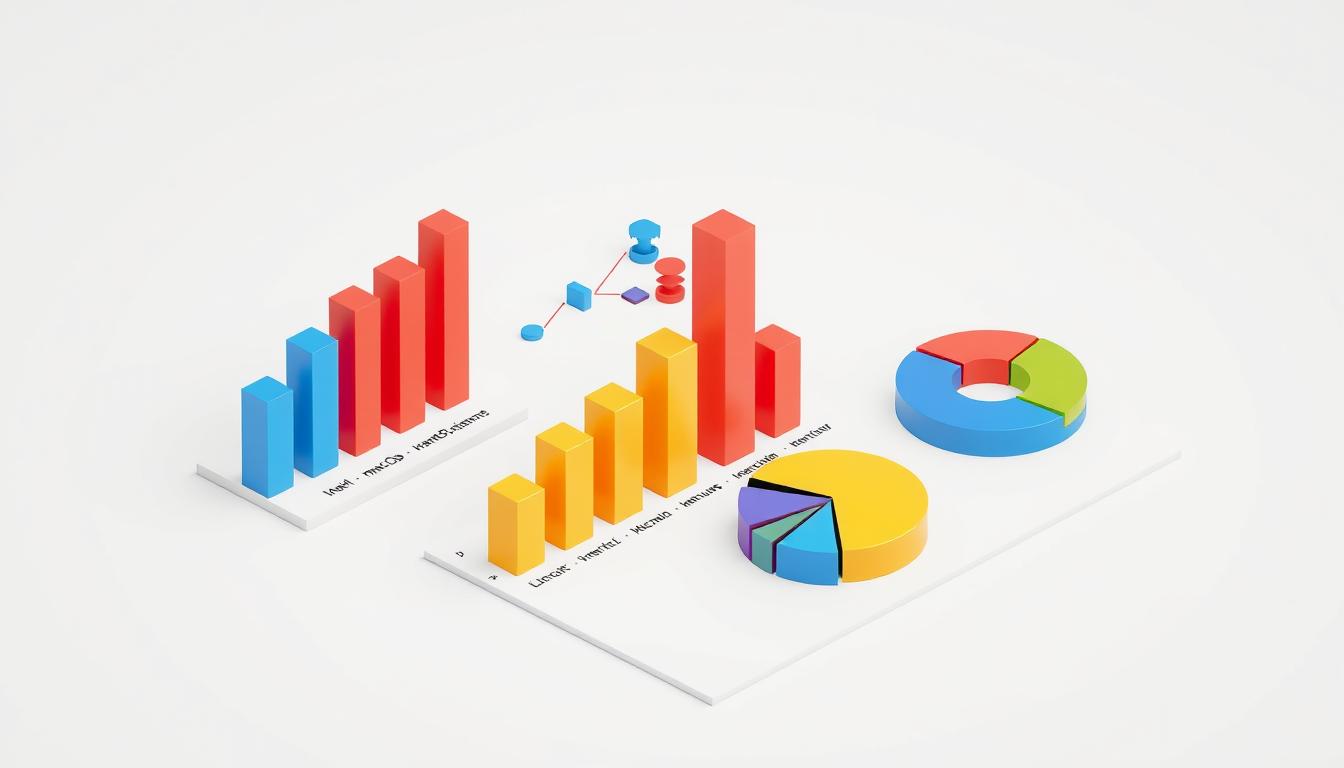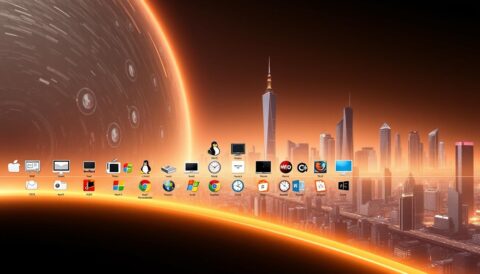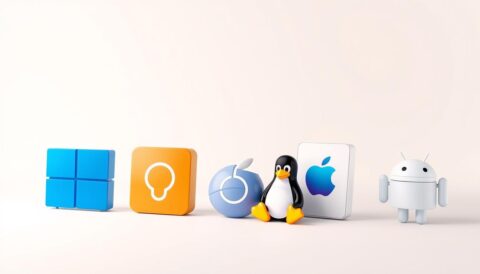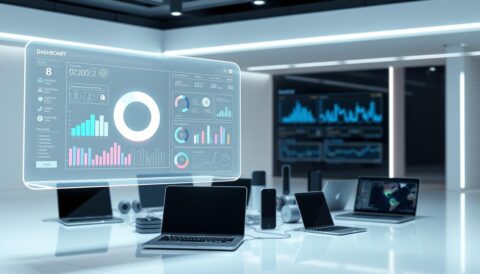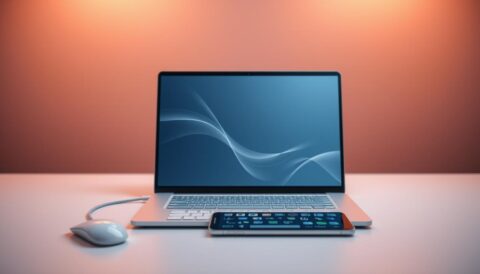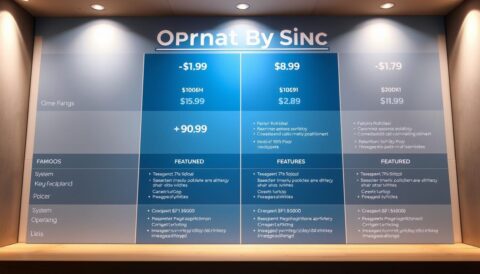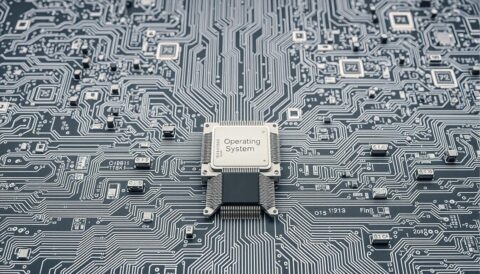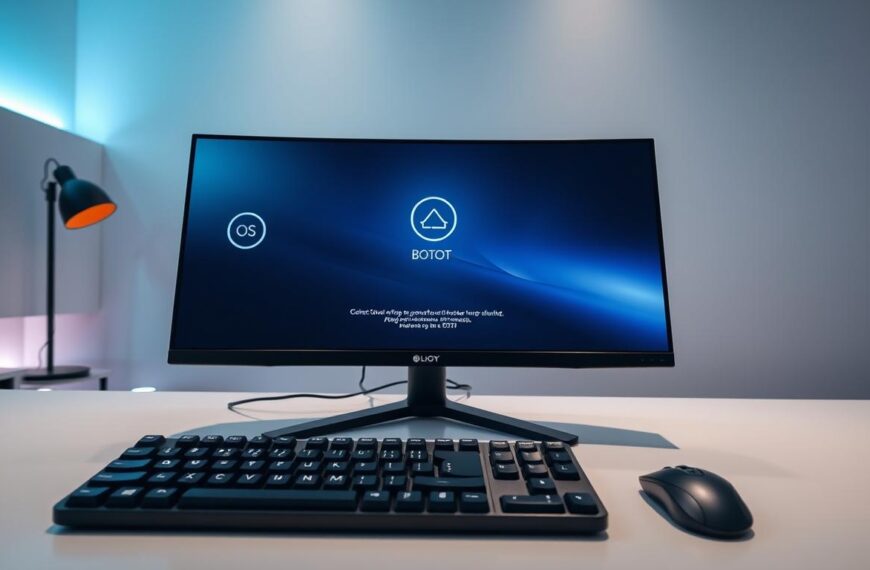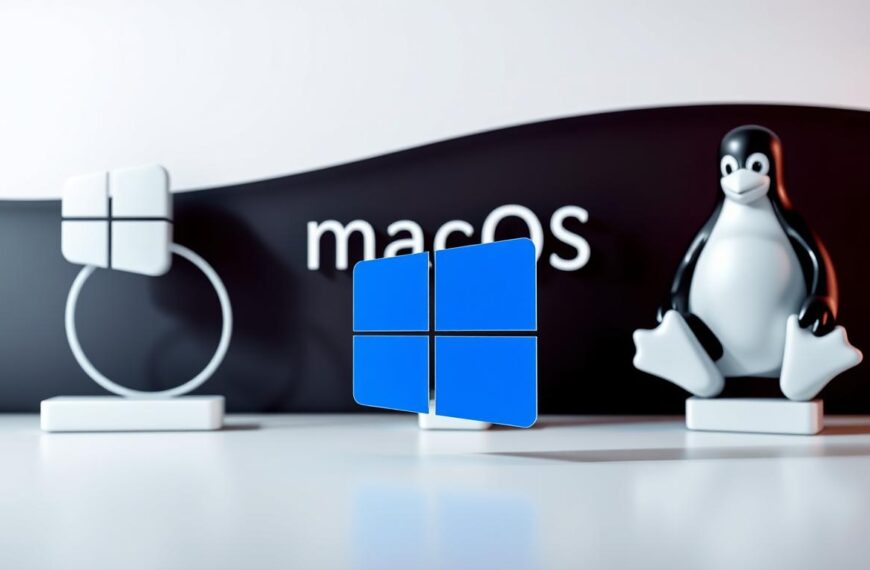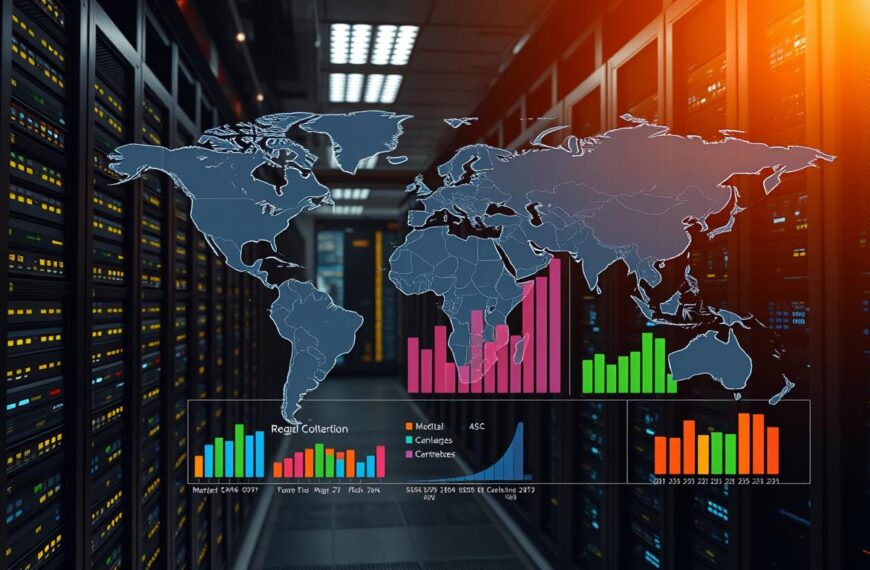In today’s rapidly evolving technological landscape, understanding the dominance of various operating systems is crucial for both personal and professional use. An operating system acts as the backbone of your device, managing hardware resources and providing a platform for running applications. From mobile devices to desktop computers, the choice of operating system significantly impacts user experience and functionality.
As of December 2024, Android leads globally with a 47% market share, excluding embedded devices, while Windows follows with 26%1. This data highlights the dynamic nature of the operating system market, where shares fluctuate based on technological advancements and user preferences. The dominance of Android in mobile devices is evident, with a 73% share, while Windows leads in desktop computers with a 73% share1.
For those interested in exploring this topic further, usage share of operating systems provides detailed insights into market trends and historical data.
The choice of operating system is pivotal, influencing everything from app compatibility to security features. Whether you prefer the versatility of Android, the familiarity of Windows, or the ecosystem of macOS, each system offers unique advantages. This article delves into the current trends, comparing mobile, desktop, and specialised operating systems to help you make informed decisions.
Introduction to Operating Systems
In the dynamic world of technology, operating systems serve as the backbone of every device, from smartphones to servers. They act as intermediaries between hardware and software, ensuring seamless interaction and efficient resource management. This section explores the fundamental role of operating systems in today’s tech landscape and outlines the scope of our discussion.
Overview and Relevance in Today’s Tech World
Operating systems are essential for managing hardware resources and providing a platform for applications to run. Whether on a smartphone or a server, the OS ensures that multiple programs can operate concurrently without interference, maintaining system stability and security. For instance, Android dominates the mobile market with a market share of approximately 72%, while Windows leads in desktop computers with a 76% share2.
Scope of the Article
This article covers various types of operating systems, including mobile, desktop, server, embedded, and IoT systems. It emphasizes the importance of selecting the right OS for optimal performance, usability, and security. With the global embedded OS market projected to reach $14 billion by 2025, the relevance of these systems continues to grow2.
The choice of an operating system significantly impacts user experience, application compatibility, and device security. As technology advances, understanding the role and scope of operating systems becomes increasingly important for both personal and professional use.
Understanding Operating Systems
Operating systems are the cornerstone of modern computing, enabling devices to function efficiently. They act as intermediaries between hardware and software, managing resources and providing a platform for applications. This section explores their core functions and historical development.
Definition and Core Functions
An operating system (OS) is a software that manages computer hardware and provides essential services for applications. Its primary functions include booting, memory management, and process control. The OS ensures hardware resources are allocated efficiently, allowing multiple programs to run simultaneously without interference. For instance, Android and Windows dominate their respective markets, with Android leading mobile devices and Windows prevalent on desktops3.
Historical Evolution and Milestones
The evolution of operating systems has been marked by significant advancements. Early systems were basic, but modern OSs boast advanced features like graphical user interfaces and robust security. Notable milestones include the introduction of GUIs in the 1980s and ongoing improvements in security and performance. Today, OSs continue to adapt, with versions like Windows 10 and macOS High Sierra reflecting these advancements3.
| Operating System | Version | Release Year | Key Features |
|---|---|---|---|
| Windows | 10 | 2015 | Universal apps, enhanced security |
| macOS | High Sierra | 2017 | APFS file system, improved graphics |
| Linux | Ubuntu 24.04 LTS | 2024 | Long-term support, enhanced security |
The table above highlights the evolution of major operating systems, showcasing their versions and key features. This evolution underscores the continuous innovation in the OS landscape, driven by technological advancements and user demands.
what are the most popular operating systems?
The landscape of operating systems is dominated by a few key players, each excelling in specific areas. Android, for instance, leads the mobile market with a 72% share, while Windows remains dominant on desktops with a 76% share4.
Apple’s iOS and macOS cater to a more niche audience, focusing on integration and security. Linux, on the other hand, stands out as a versatile, open-source option, particularly popular in server environments and among developers4.
These systems are chosen not just for their functionality but also for their security features and design philosophies. For example, Windows 10 is known for its user-friendly interface and compatibility with various software and hardware5.
| Operating System | Market Share | Primary Use | Key Features |
|---|---|---|---|
| Android | 72% | Mobile | Customisable, wide app support |
| Windows | 76% | Desktop | Universal apps, enhanced security |
| Linux | N/A | Server/Developer | Open-source, highly customisable |
The choice of an operating system depends on the device type and user preferences, ensuring optimal performance and security.
Mobile Operating Systems Dominance
In today’s digital era, mobile operating systems have become the backbone of smartphone technology, shaping how users interact with their devices. The dominance of these systems is evident in their widespread adoption and the pivotal role they play in daily life.
Android’s Global Market Leadership
Android leads the global market with a commanding 73% market share, making it the most widely used mobile operating system6. Its popularity stems from its customisable interface and compatibility with a broad range of devices. The Google Play Store hosts over 3.5 million apps, catering to diverse user needs7. Android’s dominance is further evident in countries like India and Brazil, where it captures over 80% of the market8.
Android’s success is also reflected in its revenue, with a 27% contribution to total app revenue in 20228. This highlights its significance in the global app economy.
Apple iOS and Its Impact on Smartphone Users
Apple’s iOS holds a 26% market share, primarily appealing to users in the US, UK, and Japan6. iOS is renowned for its seamless ecosystem and robust security features. Despite a smaller market share, iOS generates over 50% of total app revenue, showcasing its premium user base8.
iOS users tend to be more loyal, with 47% of former Android users switching to iOS for a better user experience7. This loyalty contributes to iOS’s sustained presence in the market.
The choice between Android and iOS often comes down to personal preference, with each system offering unique advantages. Android’s flexibility and iOS’s ecosystem make them dominant forces in the mobile OS landscape.
Desktop and Laptop OS Trends
The choice between desktop and laptop operating systems is shaped by user preferences and performance needs. Microsoft Windows and macOS are the two dominant players, each offering distinct advantages that cater to different user bases.
Microsoft Windows vs macOS: User Preferences
Microsoft Windows continues to lead the desktop market with a commanding 73% share, as of December 20249. Its widespread adoption can be attributed to its versatility across various hardware configurations and extensive software compatibility. Windows remains the preferred choice for businesses and gamers due to its broad support for applications and hardware peripherals.
macOS, on the other hand, has seen steady growth, particularly in the UK market, where it is favoured for its integration with other Apple devices and robust security features9. macOS users often highlight the system’s ease of use and the quality of its ecosystem, making it a favourite among creative professionals and those invested in the Apple environment.
When comparing the two, Windows excels in software compatibility and hardware diversity, while macOS is renowned for its security and user experience. This dichotomy reflects the diverse needs of modern users, whether they prioritise functionality or seamless integration within an ecosystem.
As the desktop and laptop markets evolve, the competition between Windows and macOS drives innovation. Developers and manufacturers must consider these trends to align their products with user preferences and emerging technologies.
“The competition between Windows and macOS exemplifies how user preferences shape the tech landscape.”
Understanding these trends is crucial for both developers and users, as they highlight the importance of choosing the right operating system for specific needs. Whether prioritising versatility or ecosystem integration, the decision impacts productivity and user satisfaction.
Tablet Operating Systems and Market Insights
In the realm of tablet computing, two operating systems dominate the landscape: iPadOS and Android. As of the latest data, Apple’s iPadOS captures 53% of the global tablet market share, while Android holds a 47% share10.
iPadOS Versus Android for Tablets
iPadOS, designed specifically for Apple’s tablets, excels in multitasking and integration with other Apple devices. Its feature set includes a refined user interface and seamless ecosystem, appealing to users seeking a polished experience. Android, on the other hand, offers a customisable environment with a wide range of apps, making it a versatile choice for diverse needs.
Android tablets, particularly those running version 3.0 (Honeycomb), are noted for their fluid design, catering to users who prefer flexibility. The Google Play Store provides access to over 300,000 apps, with many available for free, though some specialist applications may cost upwards of hundreds of pounds11.
“The competition between iPadOS and Android in tablets reflects a broader shift towards versatile, user-centric designs.”
As the tablet market evolves, both iPadOS and Android continue to innovate, offering distinct advantages that cater to different user preferences and needs.
Server and Supercomputer Operating Systems
In the realm of high-performance computing, the choice of operating system is critical for efficiency and reliability. Servers and supercomputers rely on systems that offer stability, scalability, and robust security.
Linux and Its Specialisation in Server Environments
Linux stands as the unequivocal leader in server and supercomputer environments, renowned for its stability and customisability. As of the latest data, Linux distributions command a remarkable 62.7% market share in server deployments, underscoring their prevalence in data centres12.
Within the supercomputer domain, Linux’s dominance is unparalleled. The top 500 fastest supercomputers worldwide all utilise Linux-based operating systems, a testament to their reliability and performance12. This dominance is further highlighted by the use of specific distributions like Red Hat Enterprise Linux (RHEL) and Ubuntu in these high-performance environments13.
The adaptability of Linux is a key factor in its success. It can be configured to run on a wide range of hardware, from small embedded devices to the most powerful supercomputers. This versatility, coupled with its open-source nature, allows for extensive customisation to meet specific needs12.
Security and resource management are paramount in server environments. Linux excels in these areas, offering advanced features that ensure optimal performance and minimal downtime. The ability to manage thousands of nodes with high throughput further solidifies its position as a preferred choice for server deployments13.
Linux’s dominance in server and supercomputer markets is a result of its stability, security, and customisability. These features make it the go-to choice for IT professionals seeking reliable and efficient operating systems.
Embedded Systems and IoT Operating Systems
Embedded systems and Internet of Things (IoT) devices rely on specialised operating systems designed for specific hardware and real-time performance. These systems are often tailored to manage limited resources efficiently, ensuring efficiency and reliability14.
A notable example is the embedded management processor in Intel processors, which runs a version of Minix, highlighting how these systems are integrated into everyday technology14. The challenge in measuring their market share arises due to their specialised nature, making it difficult to track their deployment across various industries15.
FreeRTOS, widely adopted in automotive and healthcare sectors, exemplifies the diversity of solutions available14. Its real-time responsiveness is crucial for critical applications, such as those used by companies like SpaceX14.
The development of IoT operating systems is driven by the need for lightweight and efficient platforms. Companies like ARM focus on creating systems that support IoT connectivity protocols, addressing the influx of data generated by these devices14.
These operating systems play a vital role in enabling smart devices, from consumer electronics to industrial applications. As IoT continues to expand, the demand for robust, scalable operating systems will grow, driving innovation in this sector14.
Market Share and Device Shipments Overview
The global technology market is shaped by the shipment dynamics of various devices, reflecting the popularity and adoption rates of different operating systems.
Statistical Insights from Recent Data
Recent data highlights significant trends in the global smartphone market. In Q4 2024, global smartphone shipments increased by 1.4% year-over-year to 328.5 million units16. This growth underscores the resilience of the smartphone market despite economic challenges. Apple led the market with 77.3 million units shipped, capturing a 23.5% market share, though this reflects a decline from the previous year16. Samsung followed with 51.7 million units and a 15.7% share, while Xiaomi showed growth with 42.7 million units and a 13.0% share16.
Android’s global market share decreased slightly to 80% in Q3 2024, while iOS maintained its position at 16%17. In China, Android’s share dropped to 69%, the lowest in a September quarter, as local vendors like Huawei gained traction with their HarmonyOS, which ranked second in the market17. HarmonyOS’s global share remained under 5%, but its consistent performance in China highlights its growing influence17.
| Vendors | Shipments (units) | Market Share |
|---|---|---|
| Apple | 77.3 million | 23.5% |
| Samsung | 51.7 million | 15.7% |
| Xiaomi | 42.7 million | 13.0% |
| Transsion | 27.2 million | 8.3% |
| Vivo | 27.1 million | 8.2% |
| Others | 102.6 million | 31.2% |
The competitive landscape continues to evolve, with Android maintaining its dominance while iOS holds a premium position. The data suggests that while global shipments are growing, individual vendor shares are shifting due to regional preferences and competitive strategies16.
Comparative Analysis: Windows vs macOS
When evaluating desktop operating systems, Windows and macOS stand out as two dominant forces, each offering unique strengths tailored to different user needs.
User Interface and Workflow Considerations
Windows is renowned for its flexibility and customisability, making it a favourite among users who value adaptability. The interface is intuitive, with features like touch functionality and advanced window management tools, which enhance workflow efficiency18. In contrast, macOS is celebrated for its sleek, minimalist design, appealing to those who prefer a streamlined experience. While macOS may lack the touch functionality of Windows, its ecosystem integration is seamless, especially for users invested in Apple’s product lineup.
Security and Software Compatibility
Security-wise, macOS is often considered more robust due to its built-in features and regular updates, making it a safer choice for sensitive data. However, Windows offers broader software compatibility, supporting a wider range of applications, which is crucial for users reliant on specific tools. The trade-off is that Windows’ openness makes it a more frequent target for malware compared to macOS.
Ultimately, the choice between Windows and macOS hinges on individual priorities—whether it’s flexibility, security, or ecosystem integration.
Linux and Open Source Alternatives
Linux stands as a cornerstone of open-source innovation, offering unparalleled customisation and flexibility. This makes it a favourite among developers and advanced users seeking tailored solutions. Its adaptability spans both server environments and desktop applications, cementing its role as a versatile operating system.
Customisation and Flexibility for Advanced Users
Linux distributions (or ‘distros’) are designed to meet diverse needs. Ubuntu, for instance, is widely adopted in enterprise settings, with 35.55% of respondents using it within their organisations in 202219. Debian and CentOS follow, each chosen for their stability and extensive software support. This variety ensures users can select a distro that aligns with their specific requirements, whether for development, server management, or personal use.
| Distribution | Market Share | Key Features |
|---|---|---|
| Ubuntu | 35.55% | User-friendly, extensive community support |
| Debian | 21.41% | Stable, ideal for servers |
| CentOS | 19.51% | Enterprise-grade, widely adopted |
Linux’s open-source nature fosters a vibrant community, driving continuous improvement. From security enhancements to hardware compatibility, the ecosystem evolves rapidly. For those exploring alternatives to macOS, Linux offers a compelling option with its customisation capabilities and cost-effectiveness. You can find more information on open-source alternatives to macOS and compare operating system costs.
The growing support infrastructure around Linux underscores its viability. Whether for servers, desktops, or embedded systems, Linux’s flexibility and customisation options make it a cornerstone of open-source computing.
Future Trends and Emerging Innovations
The future of operating systems is poised for transformative change, driven by advancements in artificial intelligence and machine learning. These technologies are expected to redefine how OSs function, interact with users, and adapt to evolving needs.
AI Integration and Advanced Features
One of the most significant trends is the integration of AI into operating systems. This innovation promises to enhance user experiences through predictive capabilities, automated task management, and intelligent security protocols. For instance, AI-driven systems can anticipate user needs, such as launching frequently used apps or adjusting settings based on usage patterns20.
Security is another area where AI will play a pivotal role. Advanced algorithms can detect and respond to threats in real-time, significantly improving system safety. This is crucial as cyber attacks become more sophisticated21.
| Feature | Description | Benefit |
|---|---|---|
| Predictive Analytics | Anticipates user actions and optimises resource allocation. | Enhances efficiency and user satisfaction. |
| Automated Task Management | Handles routine tasks without manual intervention. | Reduces downtime and improves productivity. |
| Intelligent Security | Uses AI to detect and neutralise threats proactively. | Provides robust protection against evolving threats. |
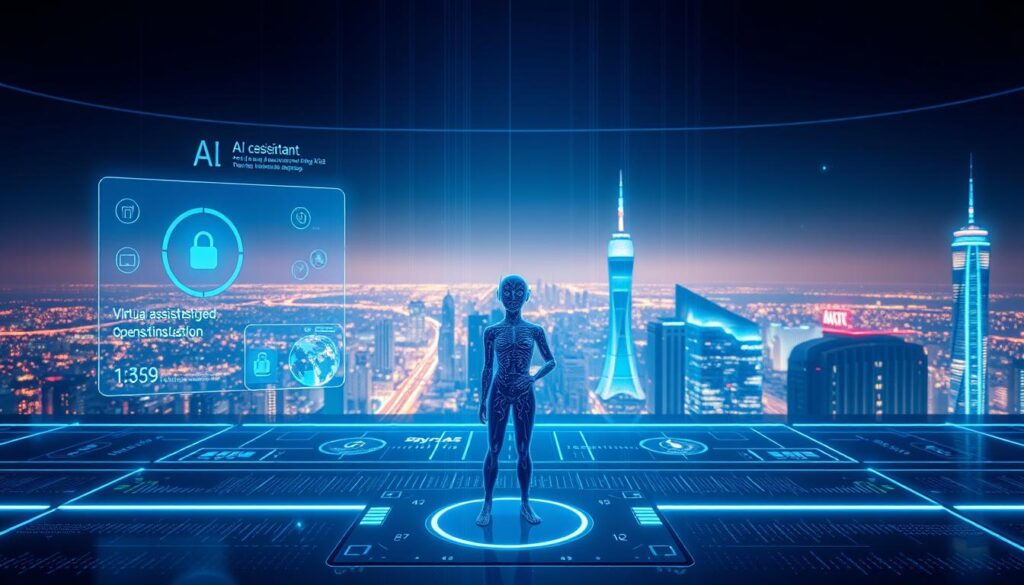
As AI becomes integral to operating systems, we can expect a shift towards more intuitive and adaptive platforms. This evolution will likely influence how users interact with devices, making technology more seamless and integrated into daily life.
“AI integration is not just a trend; it’s the future of operating systems, enabling smarter, safer, and more efficient computing experiences.”
With AI at the helm, the next generation of operating systems promises to deliver unprecedented capabilities, reshaping the tech landscape for years to come.
Conclusion
In conclusion, the world of operating systems is a diverse and dynamic field, shaped by the needs of modern technology. From Microsoft Windows dominating desktops to the ubiquity of Android on smartphone tablets, each system offers unique advantages. Apple devices, including iOS and macOS, cater to a niche audience with their seamless ecosystem and security features22.
For gamers and professionals, the choice often falls between Windows and macOS, with Windows offering broader compatibility and macOS excelling in security. Linux remains a powerhouse in server environments and among developers, while Android and iOS lead the mobile landscape23.
As technology evolves, so too will operating systems, with AI integration promising enhanced user experiences. Whether for games, productivity, or security, selecting the right OS is pivotal. This comprehensive analysis provides a clear guide for consumers and professionals alike, ensuring informed decisions in our ever-connected world22.
FAQ
What are the most popular operating systems today?
The most popular operating systems include Microsoft Windows, Apple macOS, and various distributions of Linux. For mobile devices, Android and Apple iOS dominate the market.
What is the primary function of an operating system?
The primary function of an operating system is to manage computer hardware resources and provide a platform for running application software. It acts as an intermediary between computer hardware and user-level applications.
Which operating system is best for mobile devices?
Android and Apple iOS are the leading operating systems for mobile devices. Android offers a wide range of customization options and hardware choices, while iOS is known for its ease of use and integration with other Apple devices.
What is the difference between a desktop and a laptop operating system?
The primary difference lies in design and optimization. Desktop operating systems are optimized for performance and multitasking, while laptop operating systems are designed for portability and power efficiency.
Can I use Linux on my smartphone?
Yes, there are several Linux-based operating systems available for smartphones, such as Ubuntu Touch and Sailfish OS. However, they are not as widely used as Android or iOS.
What is the latest version of Microsoft Windows?
As of now, the latest version of Microsoft Windows is Windows 11.
How do I update my operating system?
The process varies depending on your OS. For Windows, you can update via the Settings app. For macOS, use the Software Update section in System Preferences. For mobile devices, updates are typically available in the Settings app under “System” or “General Management.
Is macOS more secure than Windows?
Both macOS and Windows have robust security features. macOS is generally considered more secure due to its built-in security features and fewer malware threats, but Windows has made significant strides in security in recent versions.
What is the difference between Android and iOS?
Android offers more hardware choices and customization options, while iOS is known for its ease of use, integration with other Apple devices, and a more curated app store.
Can I use the same operating system on both desktop and mobile devices?
Generally, no. Desktop and mobile operating systems are designed for different hardware architectures and use cases. However, some operating systems, like Windows 10, have versions optimized for both desktop and mobile devices.
How often are operating system updates released?
Operating system updates are released regularly, typically monthly or quarterly, to fix bugs, add new features, and improve security.
What is the best operating system for gaming?
Windows is generally considered the best operating system for gaming due to its wide range of compatible games and hardware support. However, macOS and Linux also have their own gaming communities and compatible titles.
Can I install a different operating system on my device?
Yes, many devices allow you to install a different operating system. However, this may void your warranty or cause compatibility issues. It’s important to research and ensure the OS is compatible with your hardware before installation.
What is the difference between a free and paid operating system?
Free operating systems, like Linux, are often open-source and customizable, while paid operating systems, like Windows or macOS, offer additional features, support, and customer service.
How do I choose the right operating system for my needs?
Consider your specific needs, such as compatibility with software applications, hardware requirements, ease of use, and security features. Research different operating systems and read user reviews to make an informed decision.
What is the future of operating systems?
The future of operating systems is likely to include more integration with artificial intelligence, enhanced security features, and better support for cross-device compatibility. Cloud-based operating systems may also become more prevalent.
Source Links
- Most Popular Operating Systems in the World
- What is an Operating System (OS)? | Definition from TechTarget
- Computer Basics: Understanding Operating Systems
- 5 Most Popular Operating Systems
- 6 Most Popular Desktop Operating Systems in the World | Enterprise Wired
- Android vs iOS: Mobile Operating System market share statistics (Updated 2025)
- Android vs iOS Market Share – Who Holds The Edge [2024]
- Compare the top mobile operating systems for developers | TechTarget
- Usage share of operating systems
- Operating Systems Global Market Report 2025
- Tablet operating systems compared
- The Top Three Reasons Linux is Running the World’s Supercomputers
- Supercomputer operating system
- Exploring Common Embedded Operating Systems – Blue Goat Cyber
- What Are the Most Popular Real-Time Operating Systems in 2024?
- IDC – Smartphone Market Insights – Home
- Global Smartphone Sales Share by Operating System
- macOS vs. Windows: Which OS Is Best?
- Ranking the Top Enterprise and Open Source Operating Systems of 2022 | OpenLogic by Perforce
- 25 New Technology Trends for 2025 | Emerging Technologies 2025
- TOP 5 OPERATING SYSTEMS FOR 2024 | Bilginç IT Academy
- Operating system
- List of Operating System: Top Operating System List for 2024

